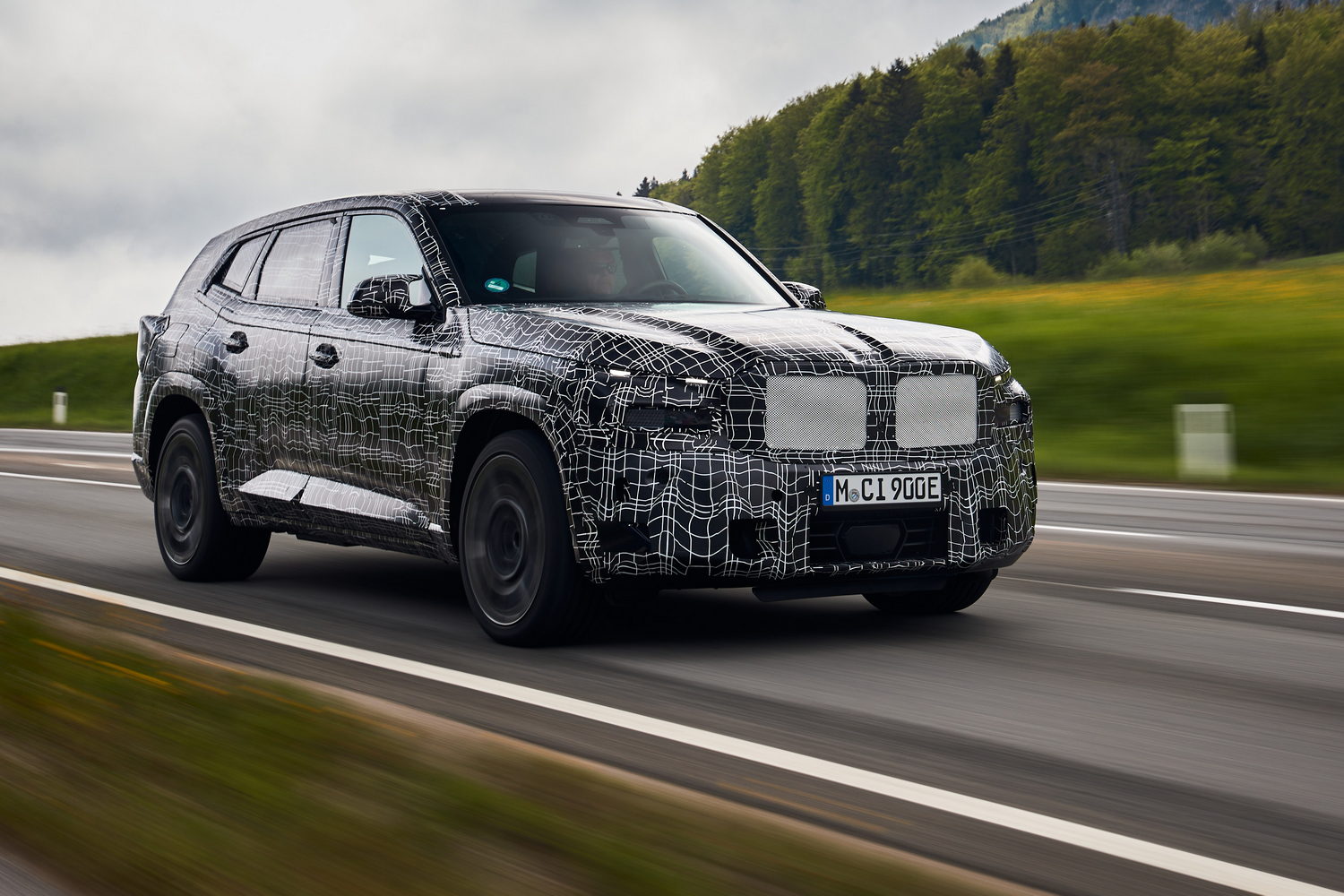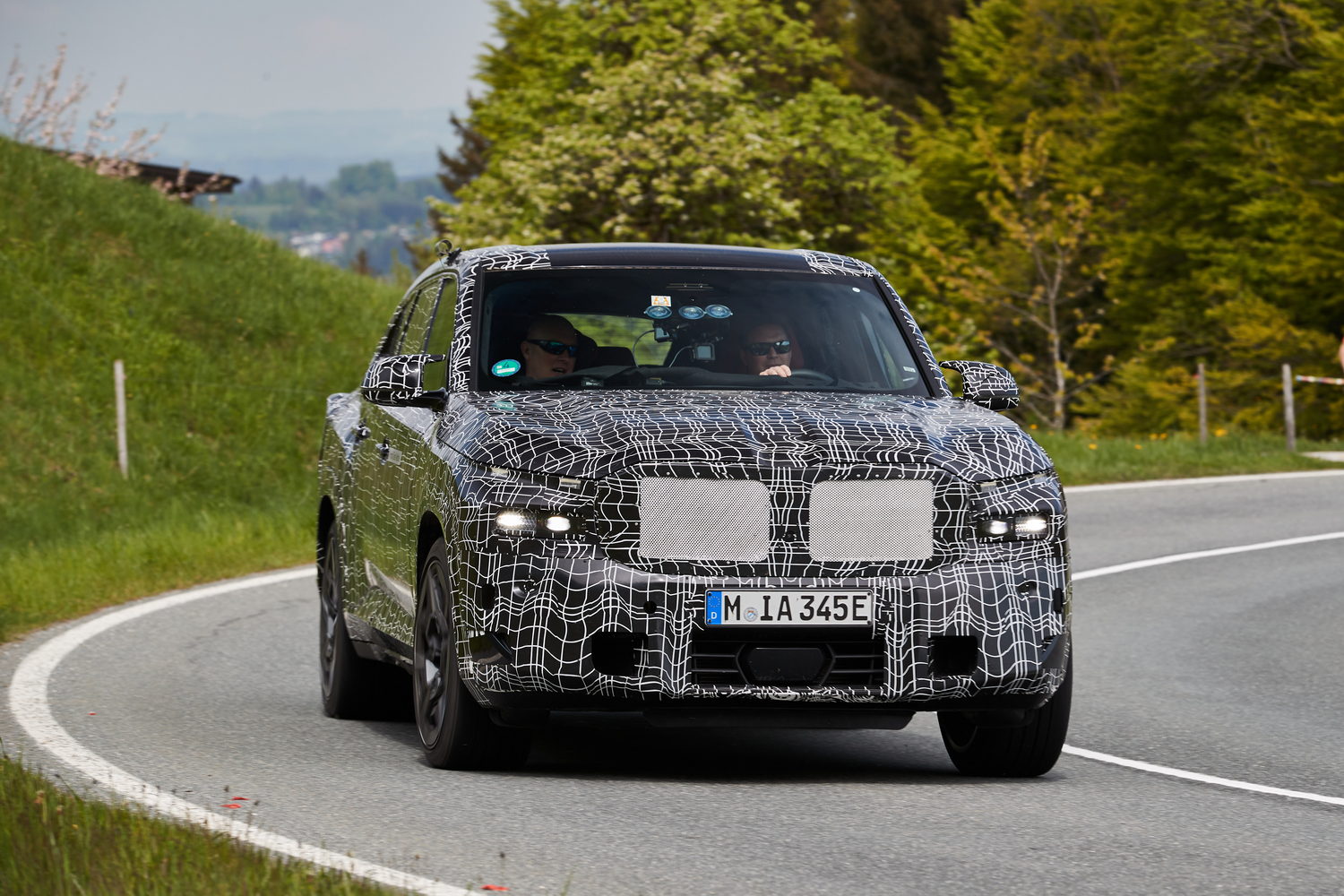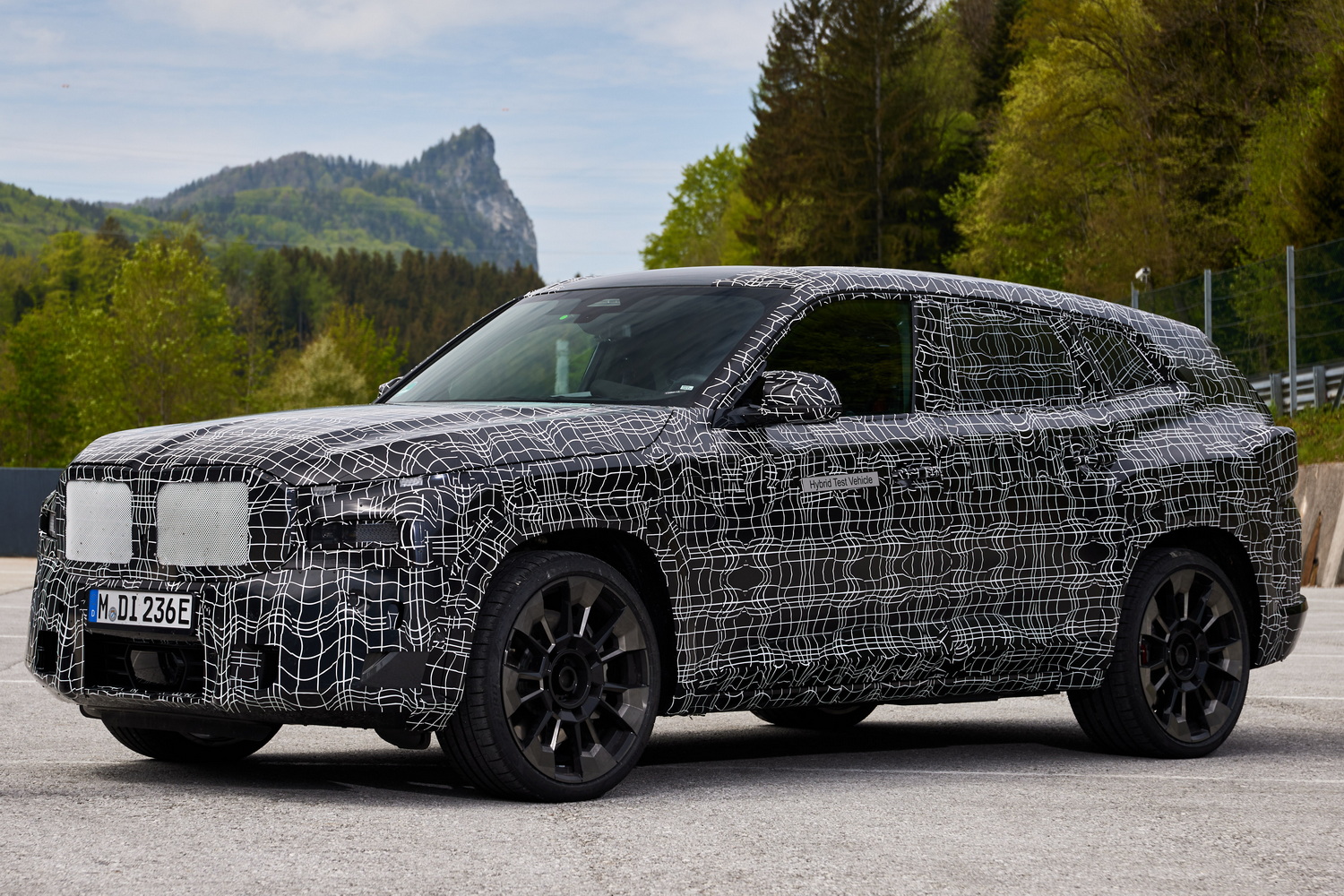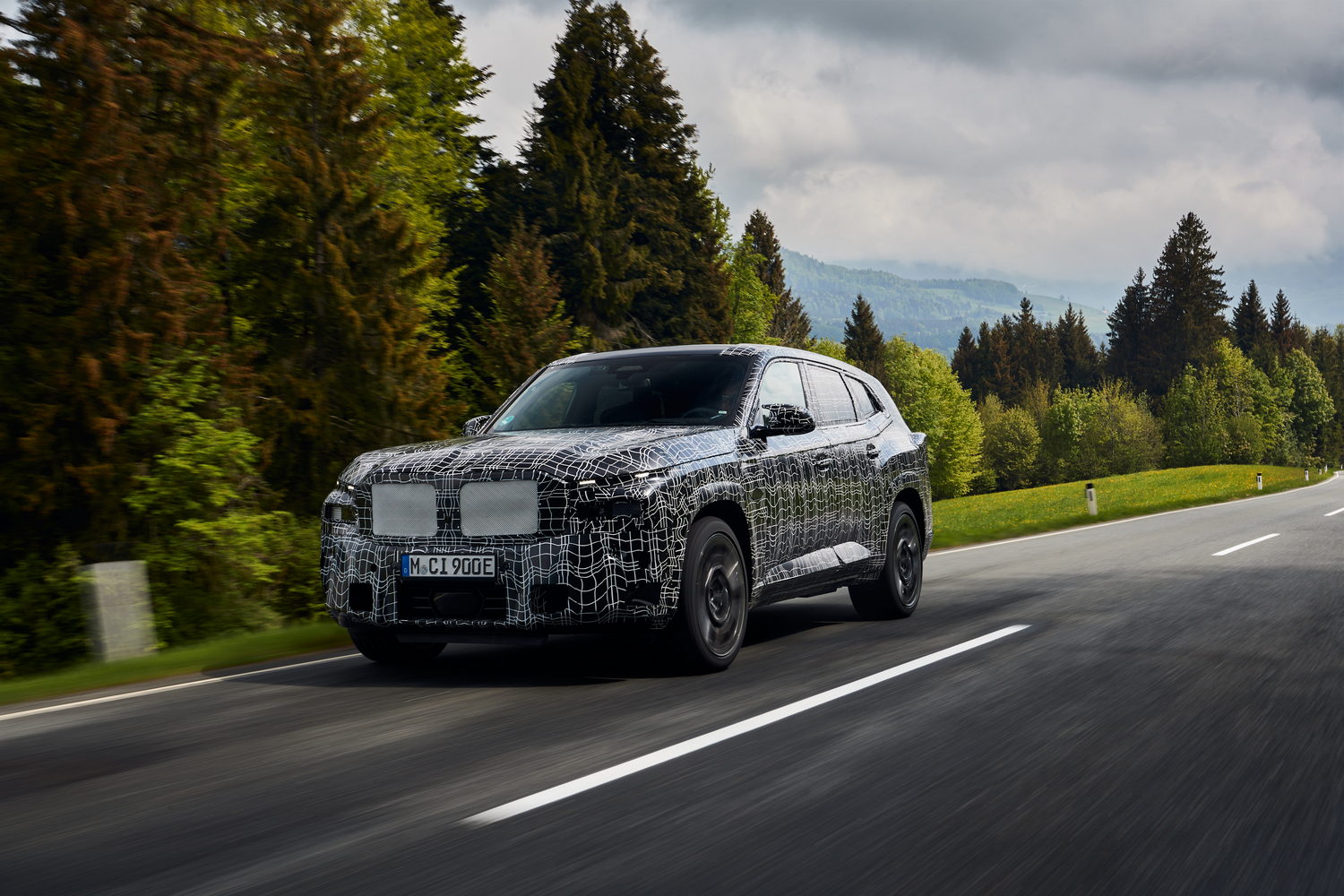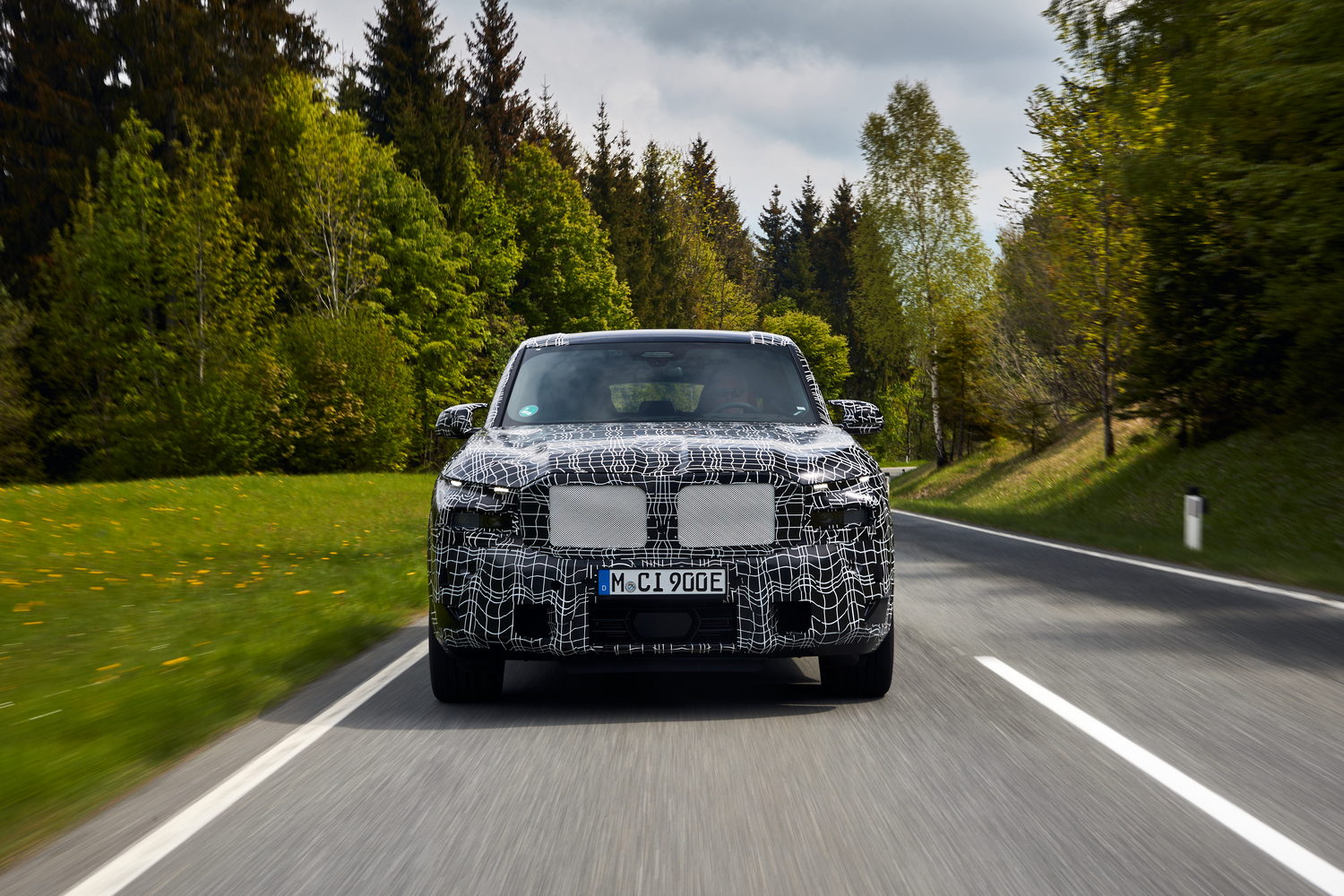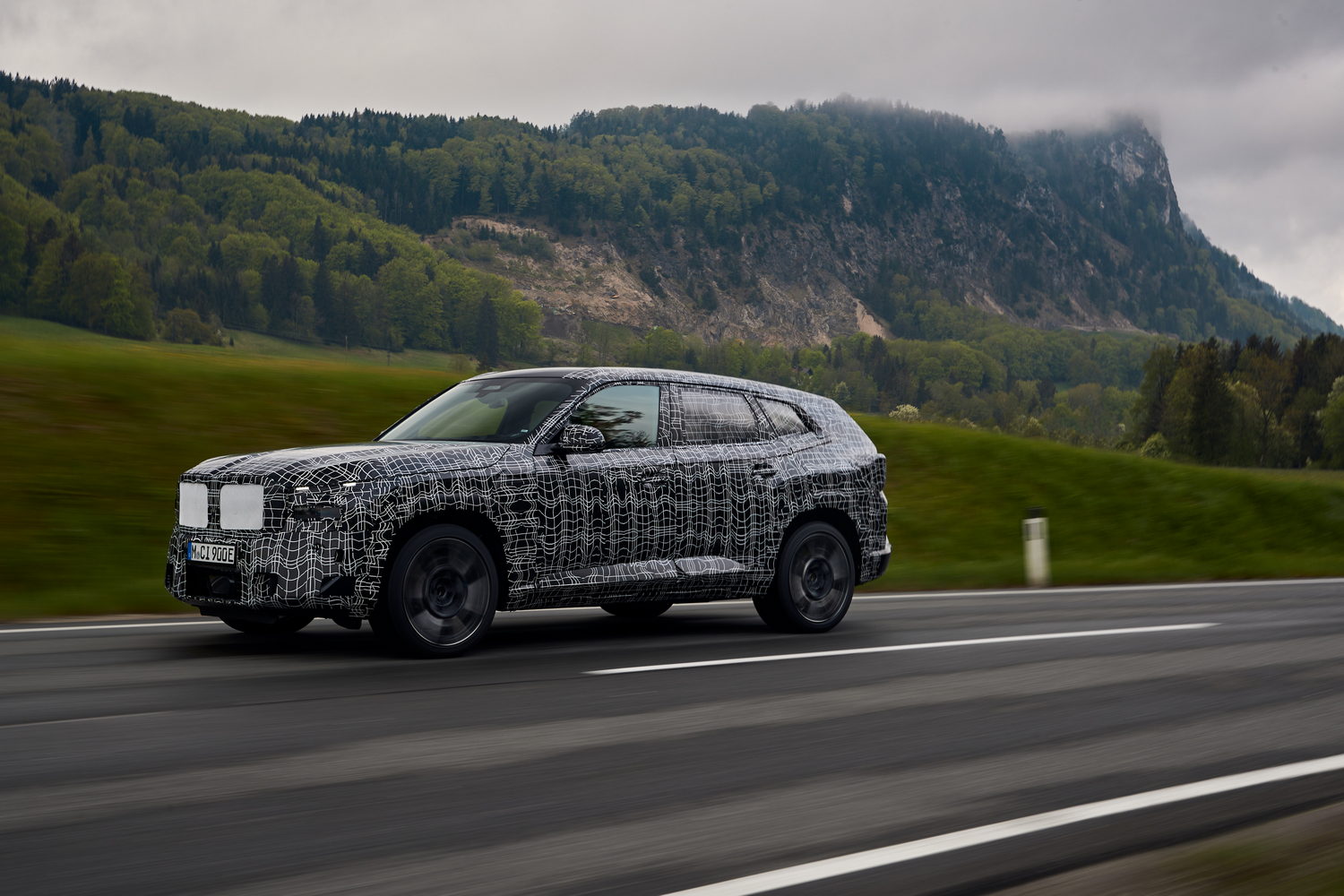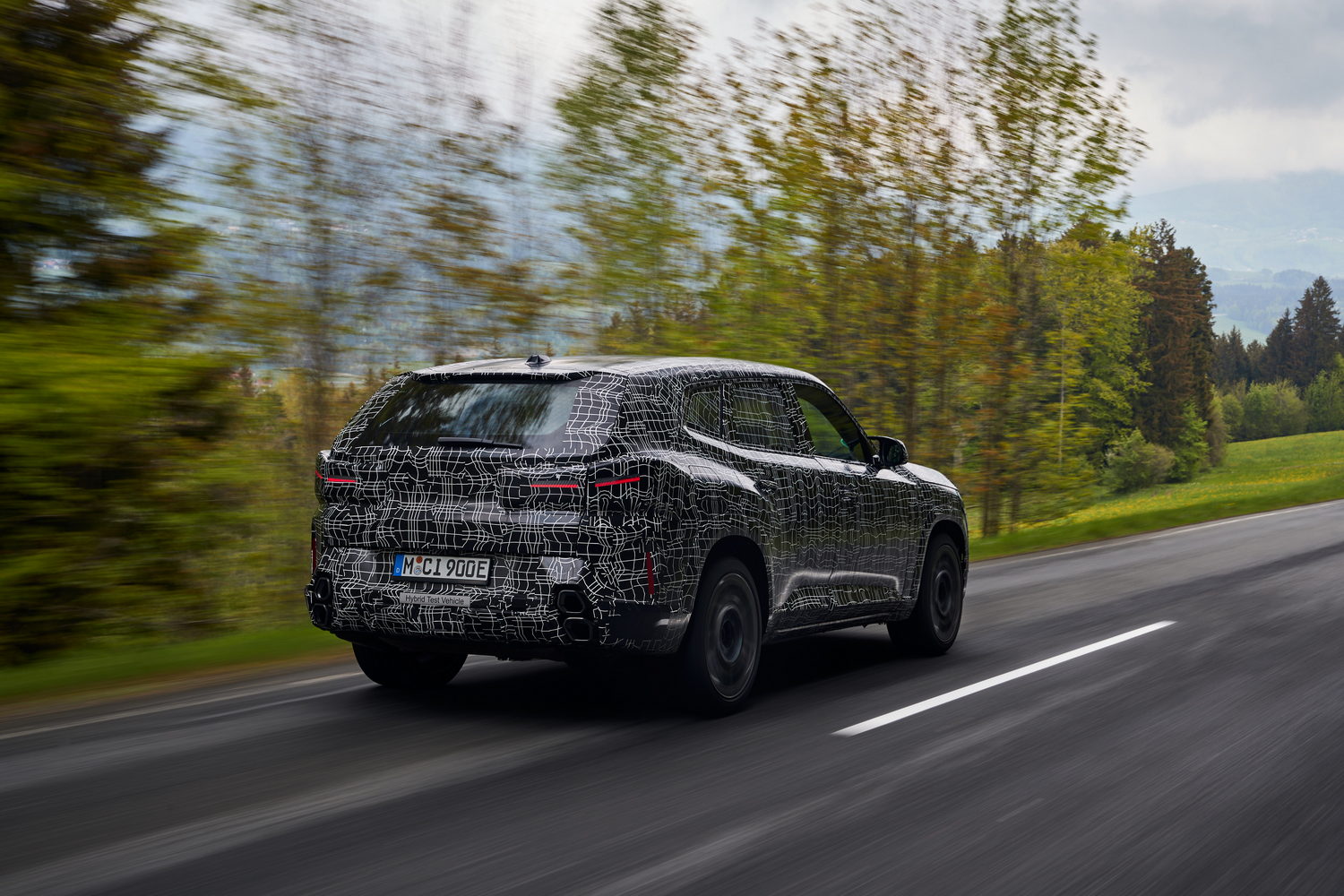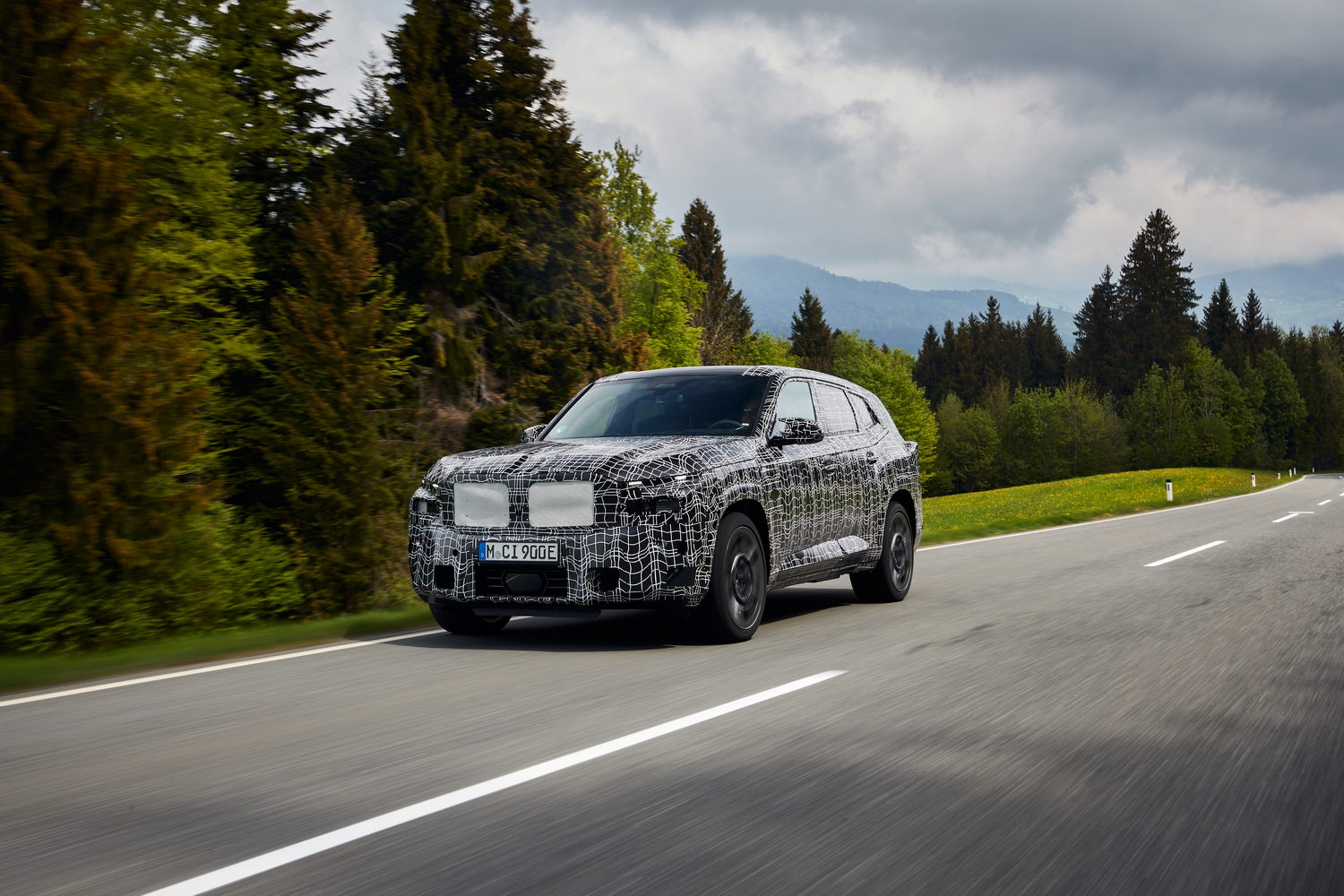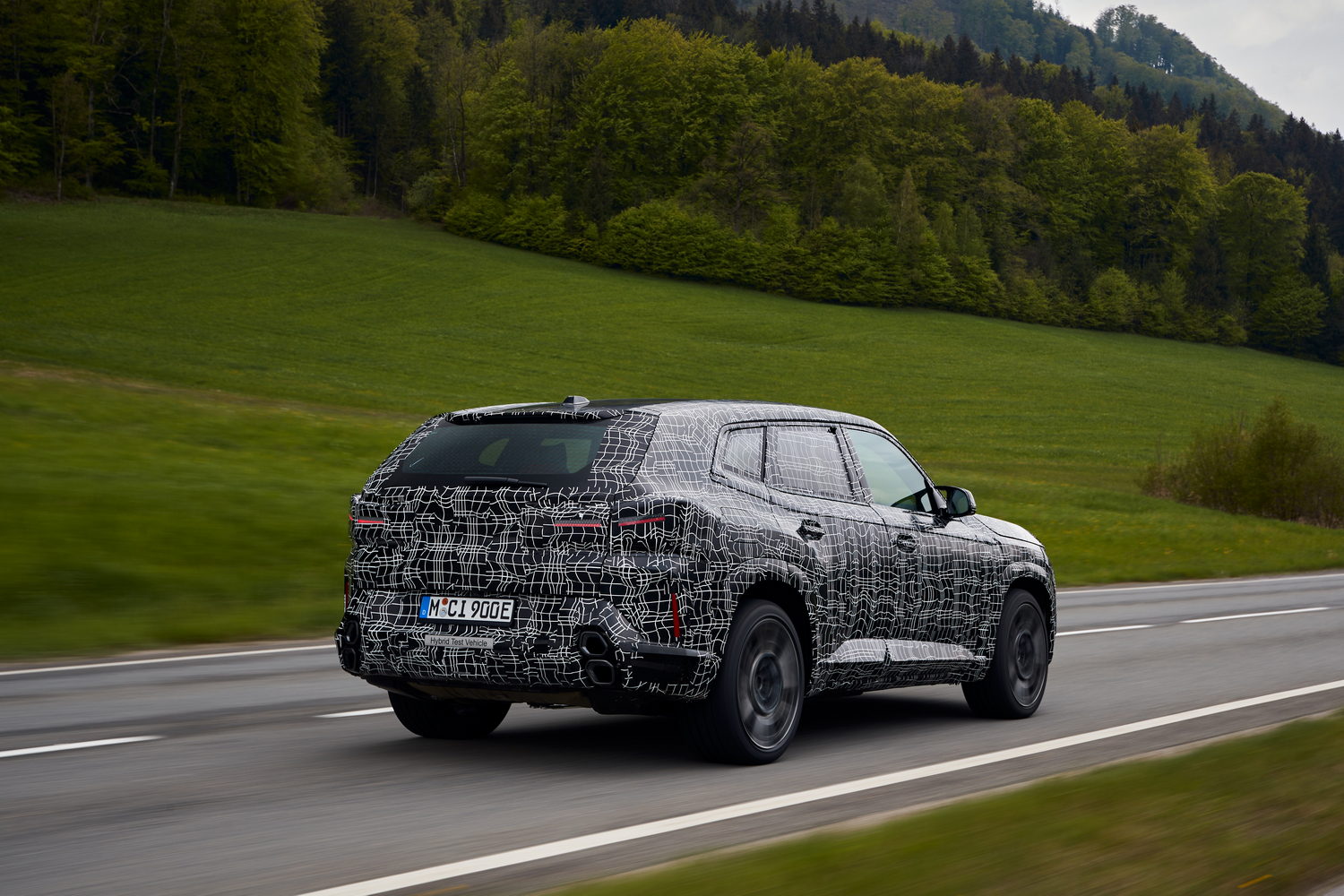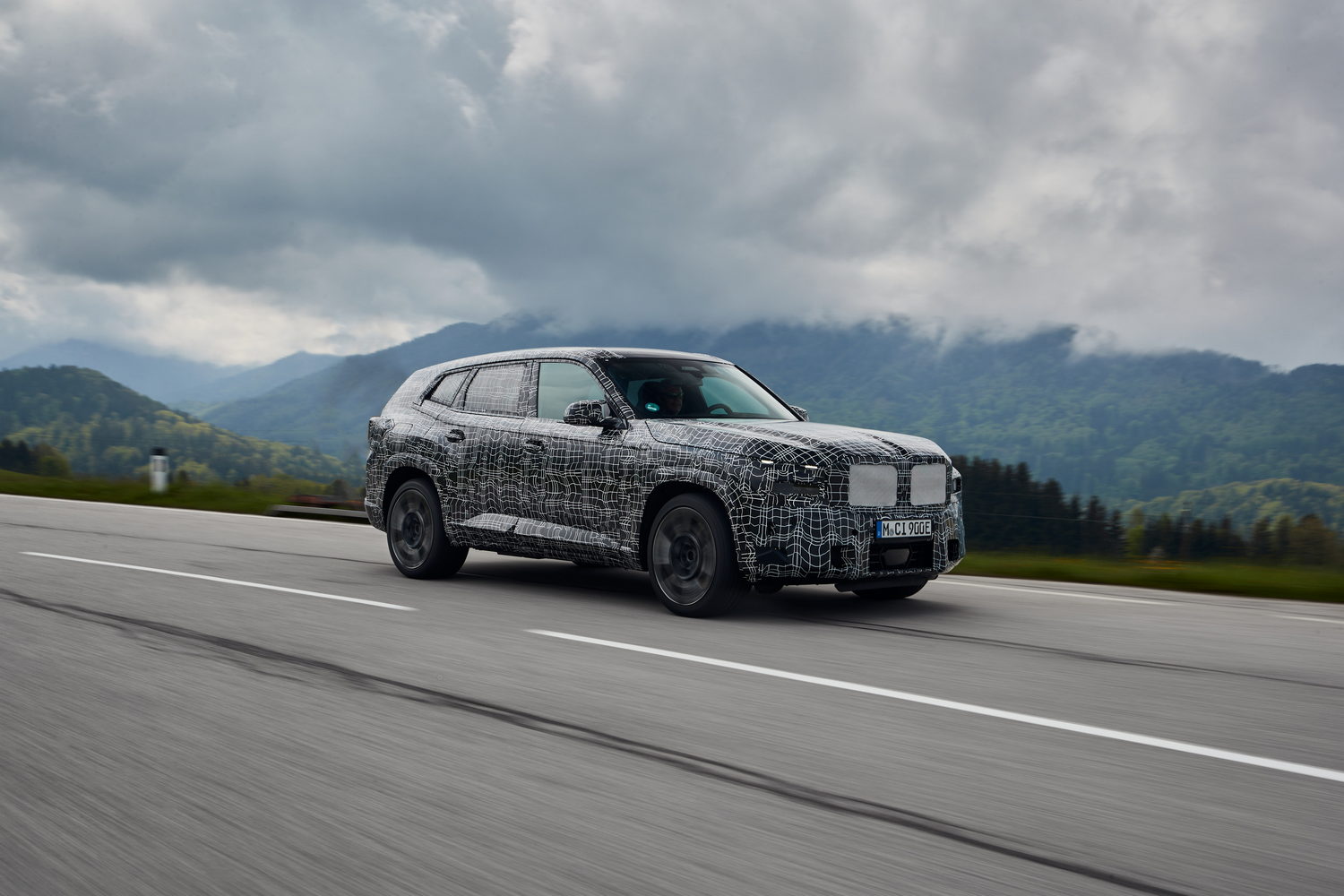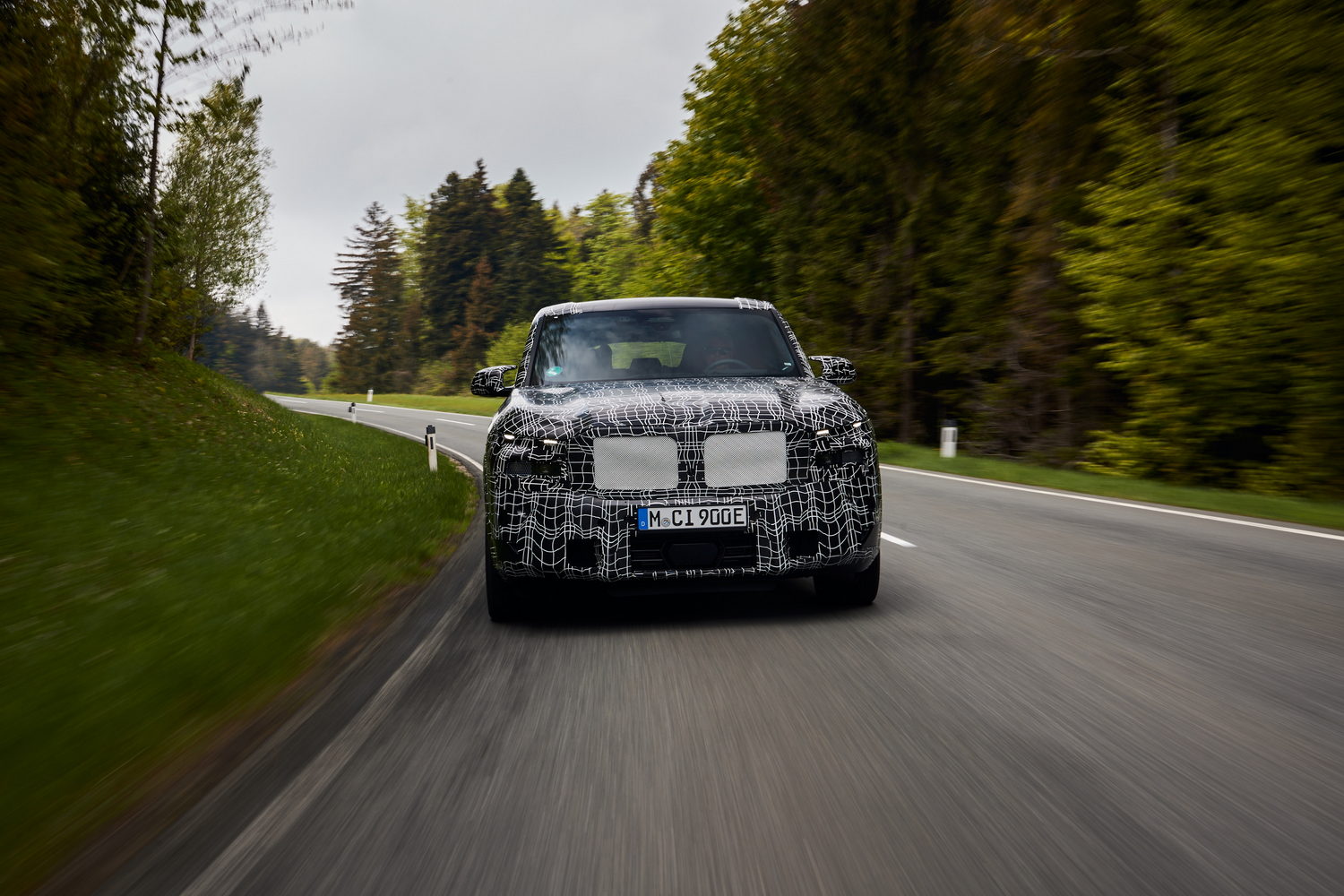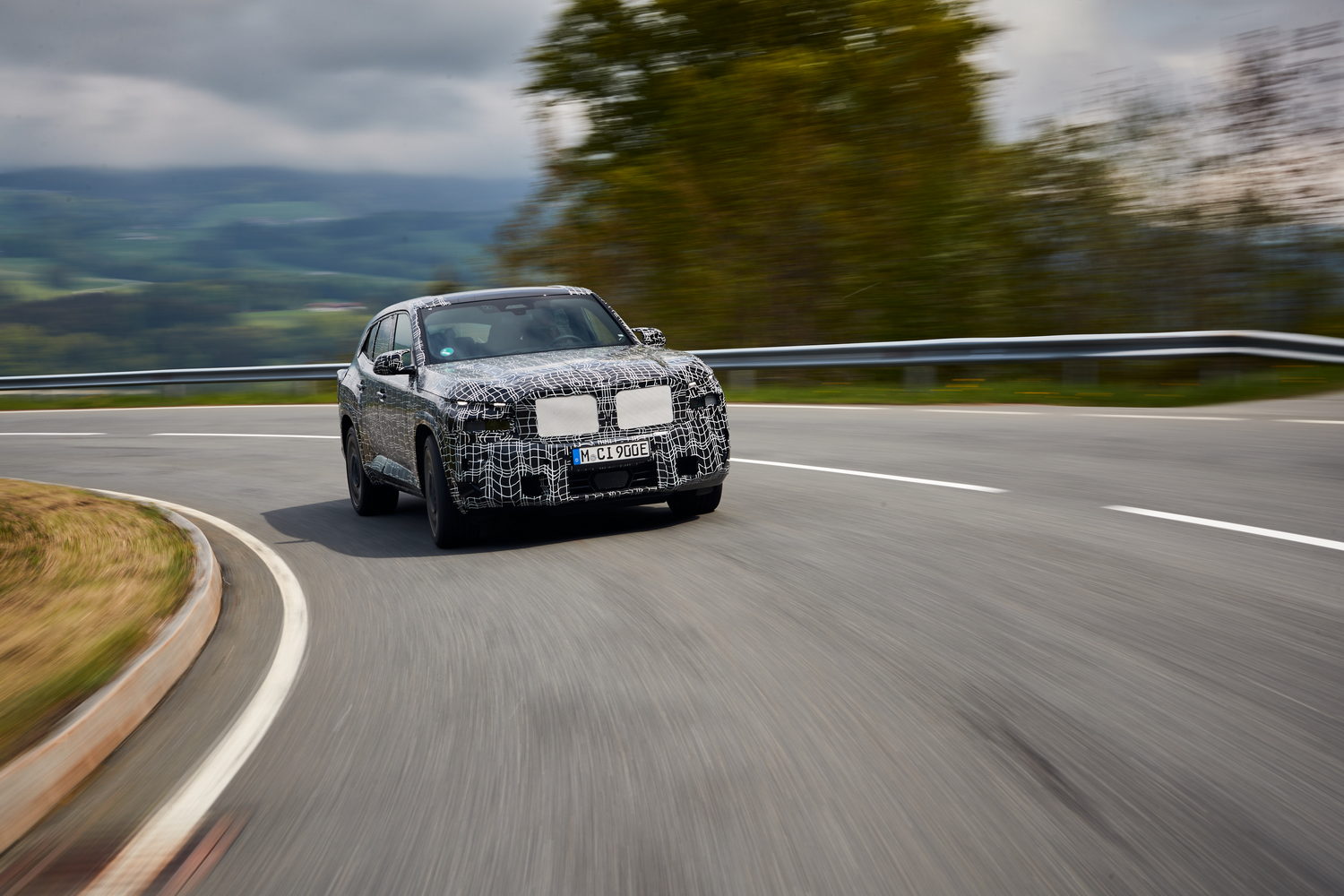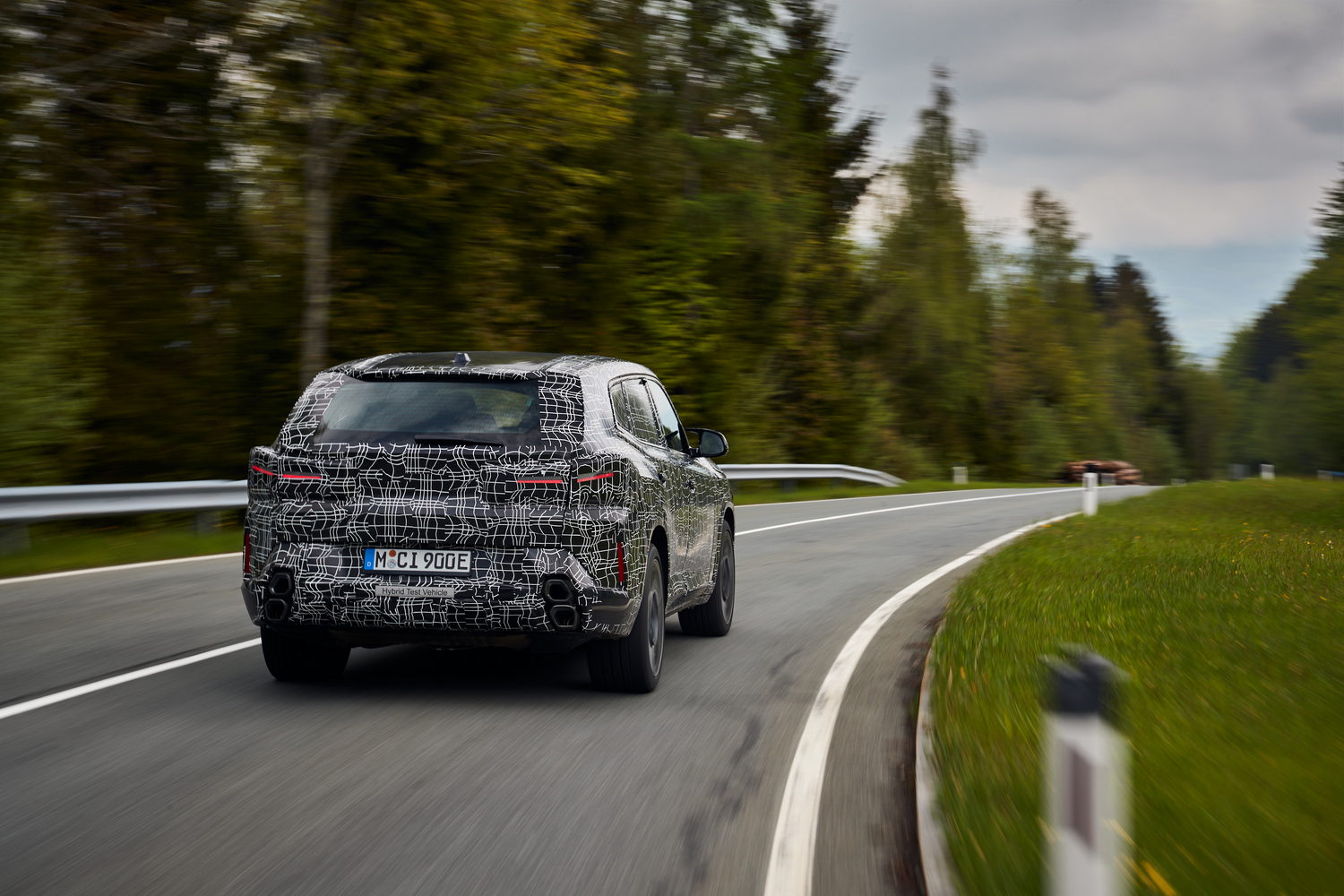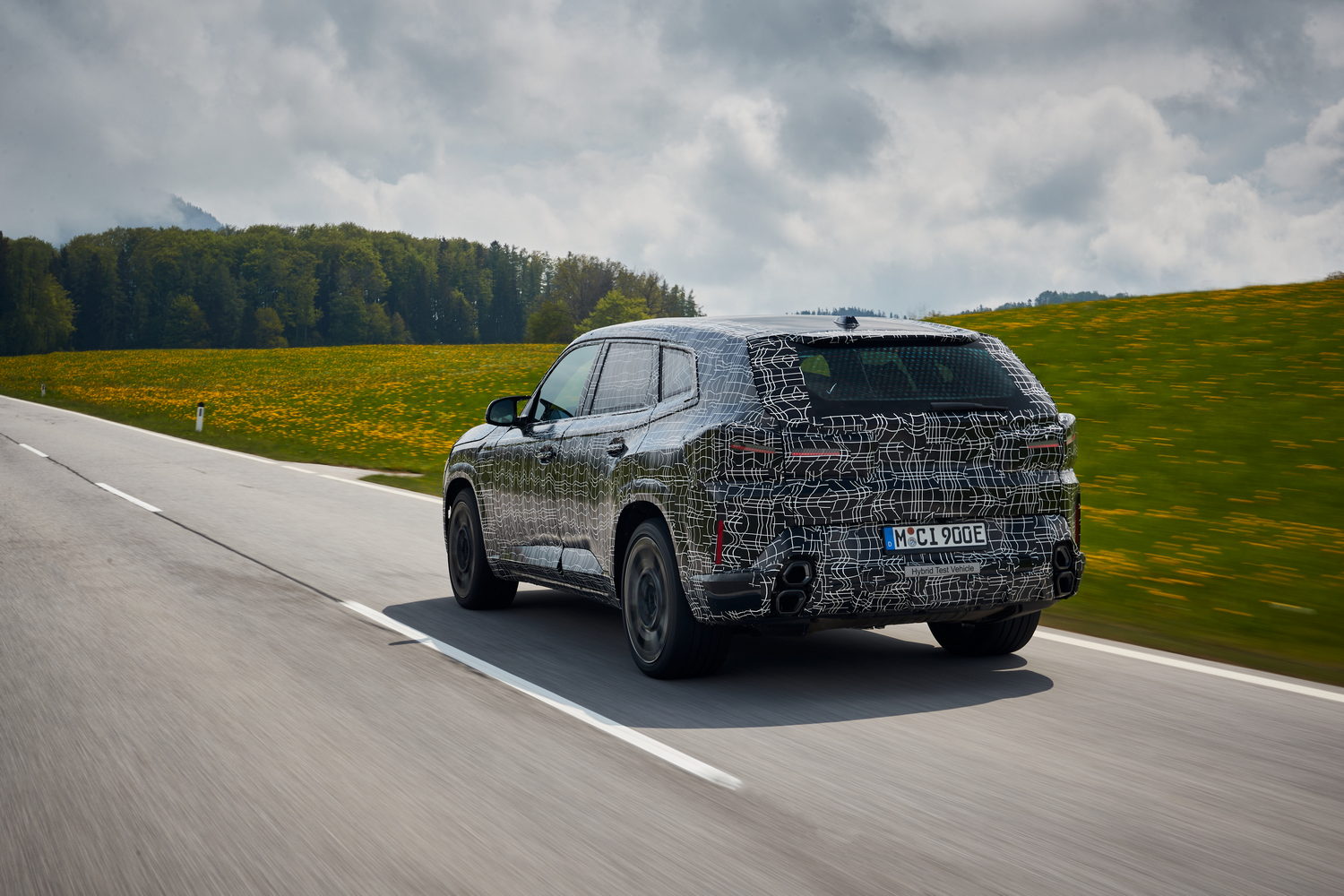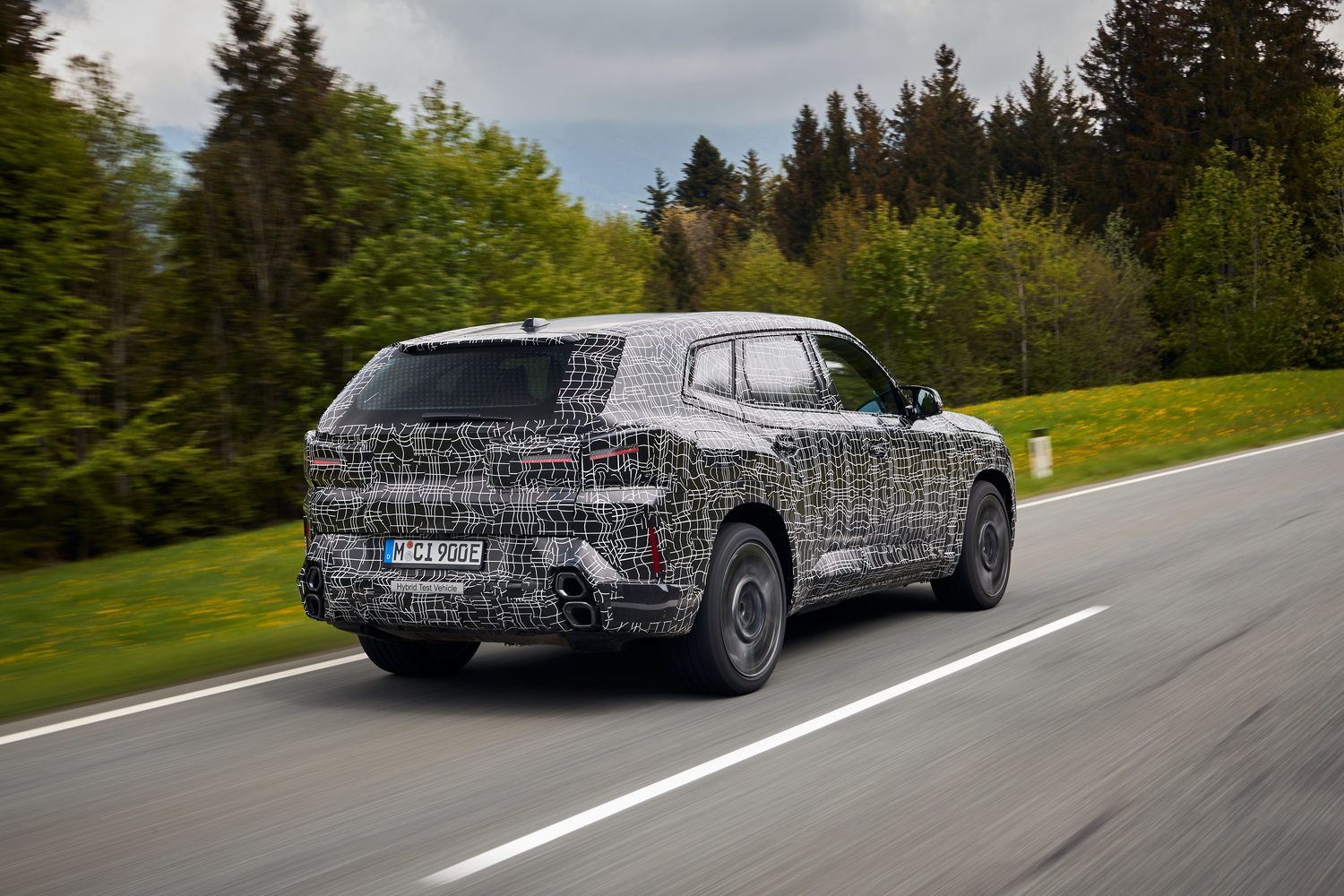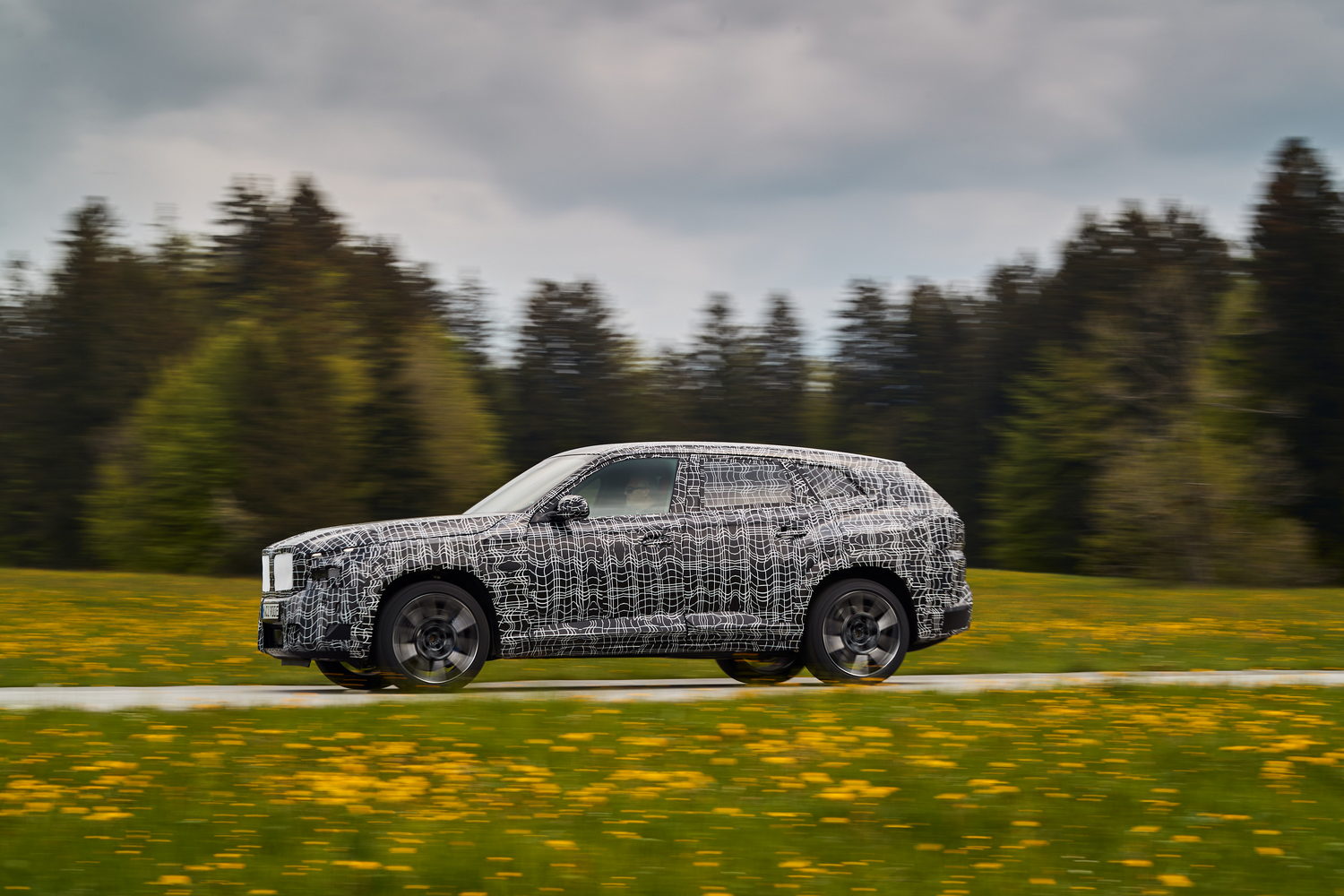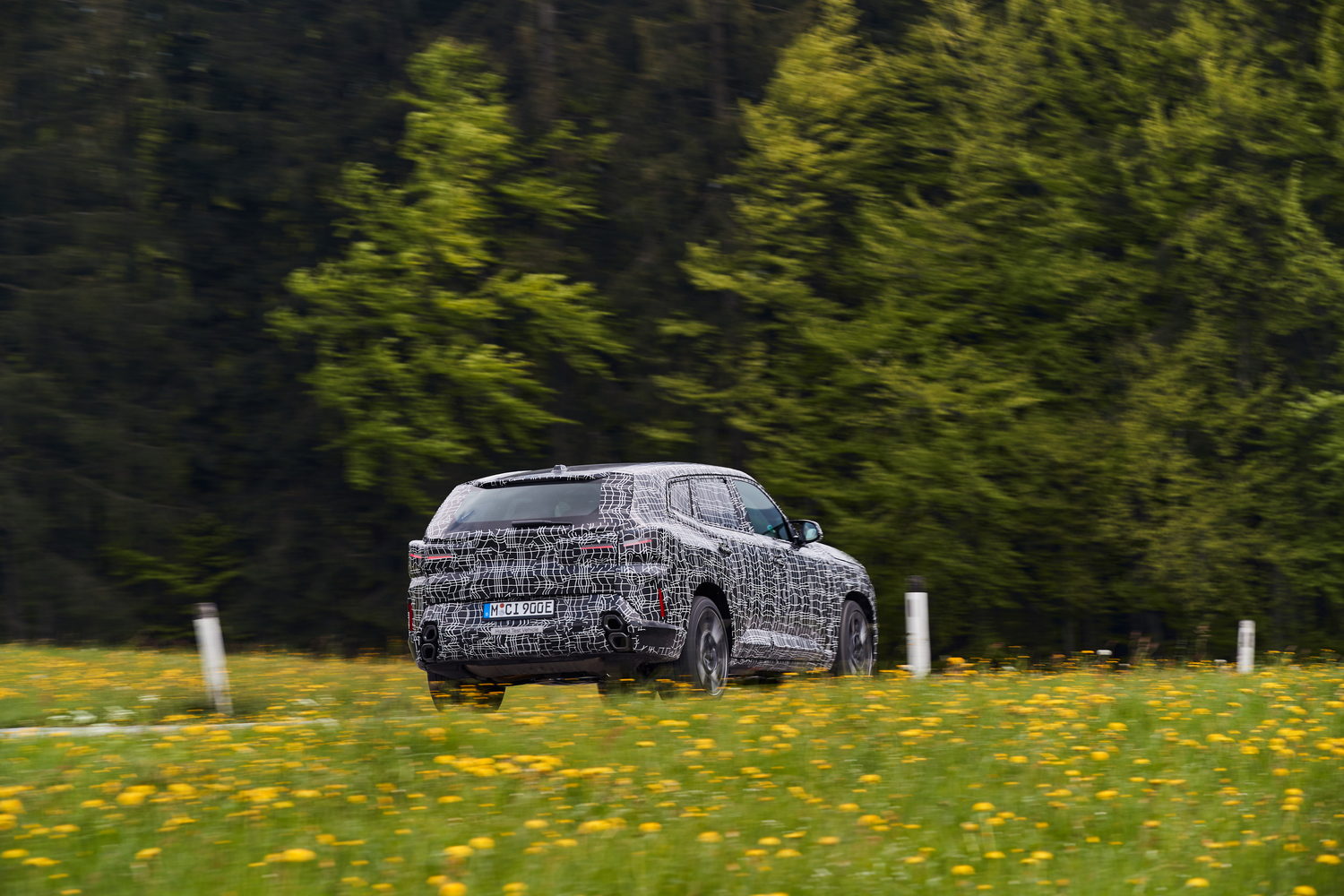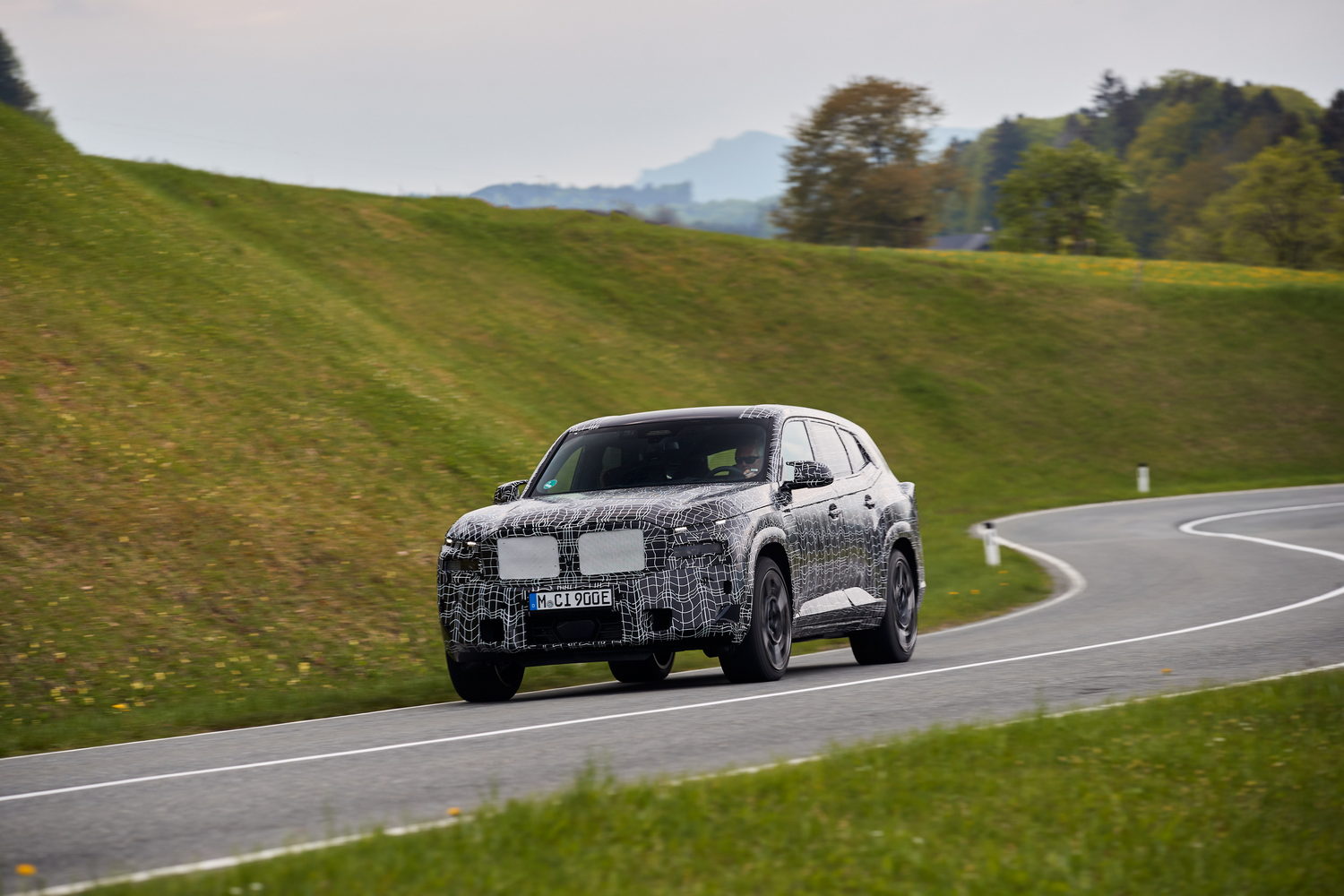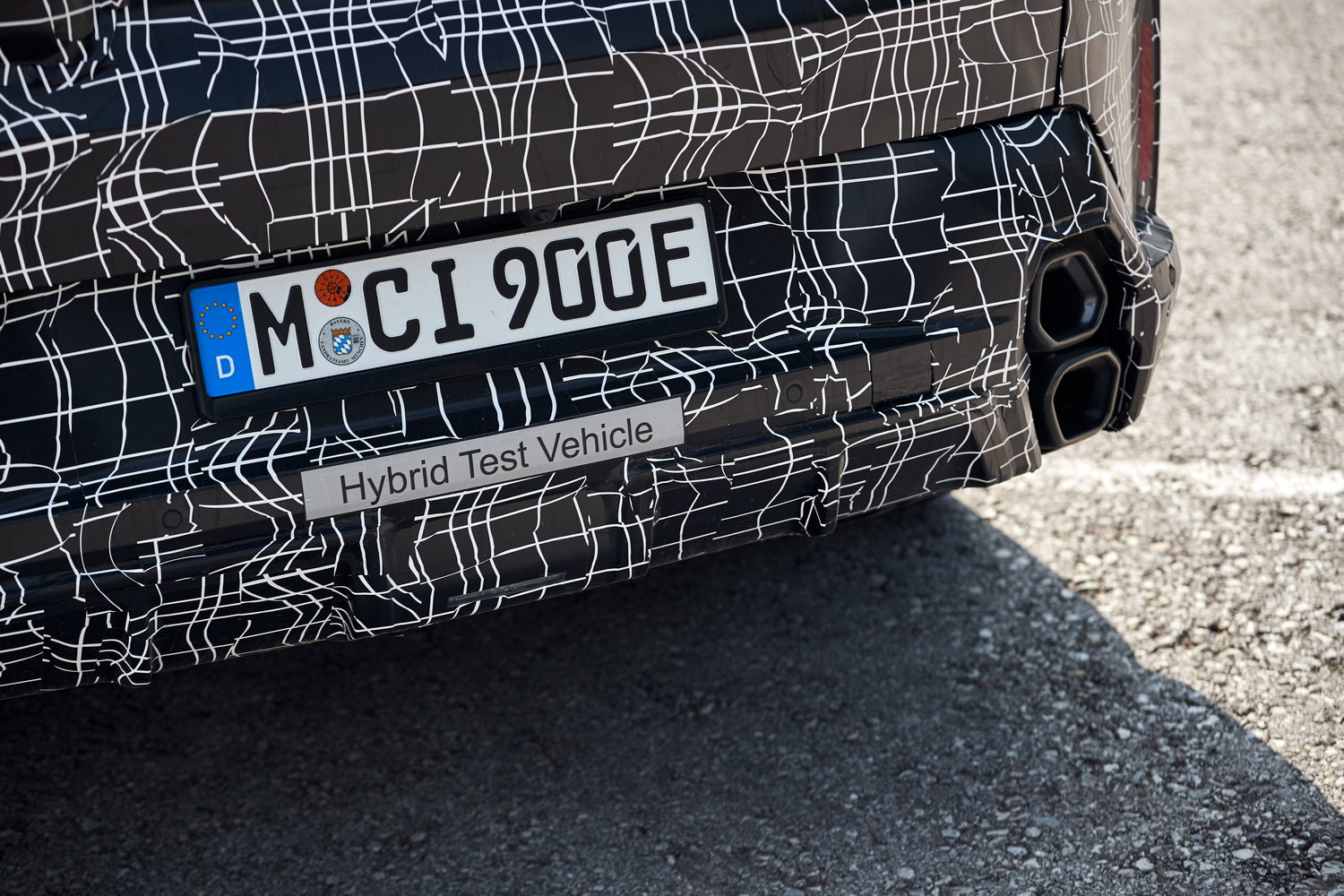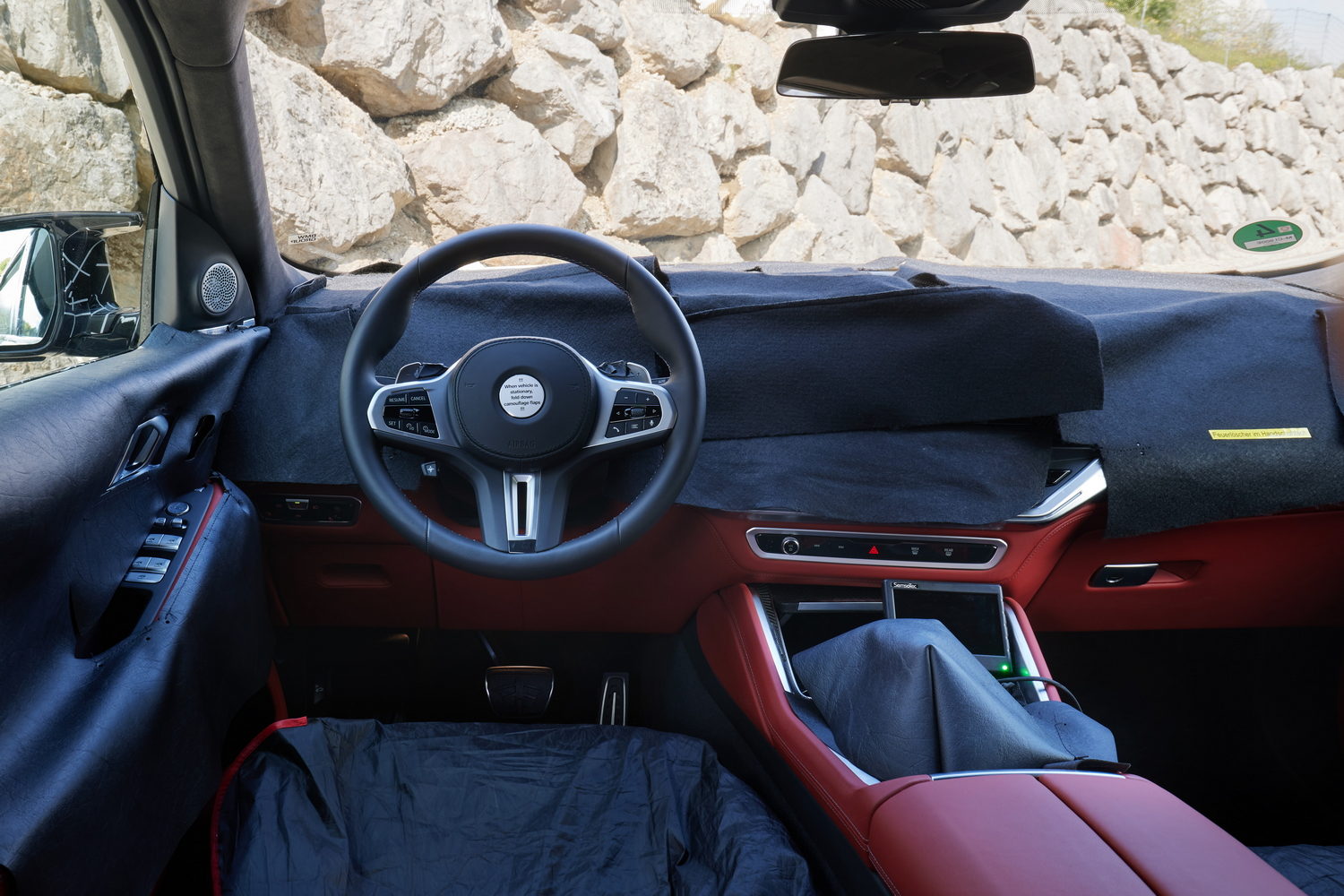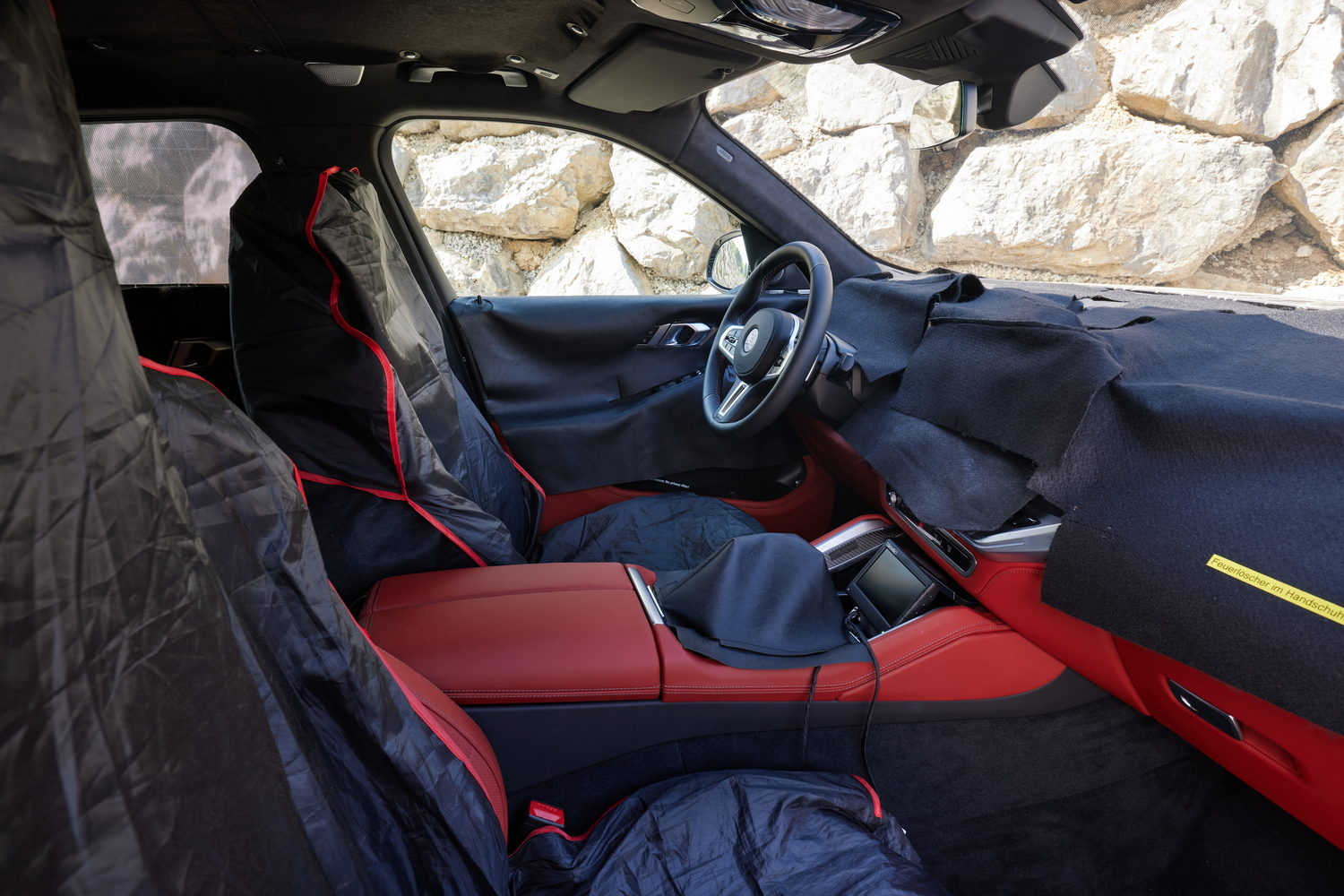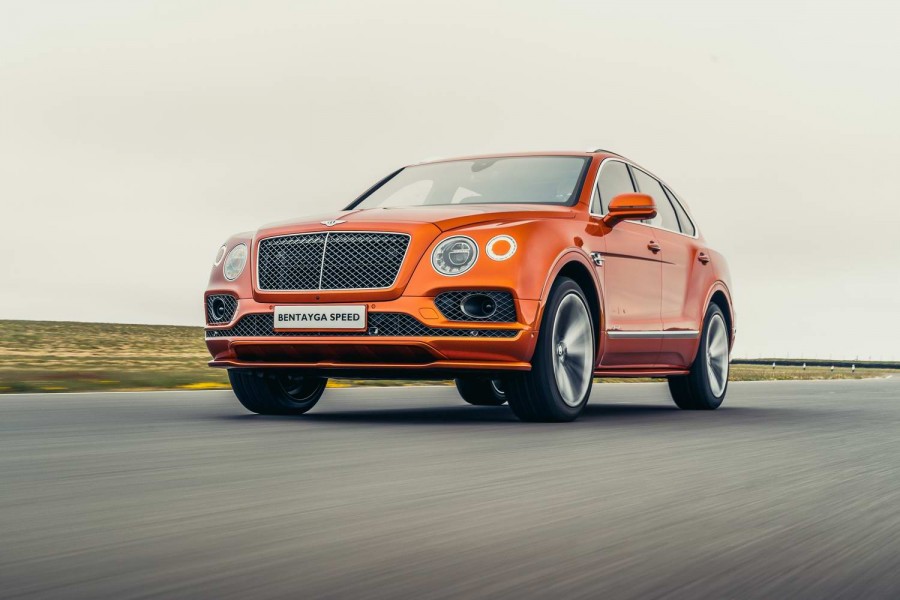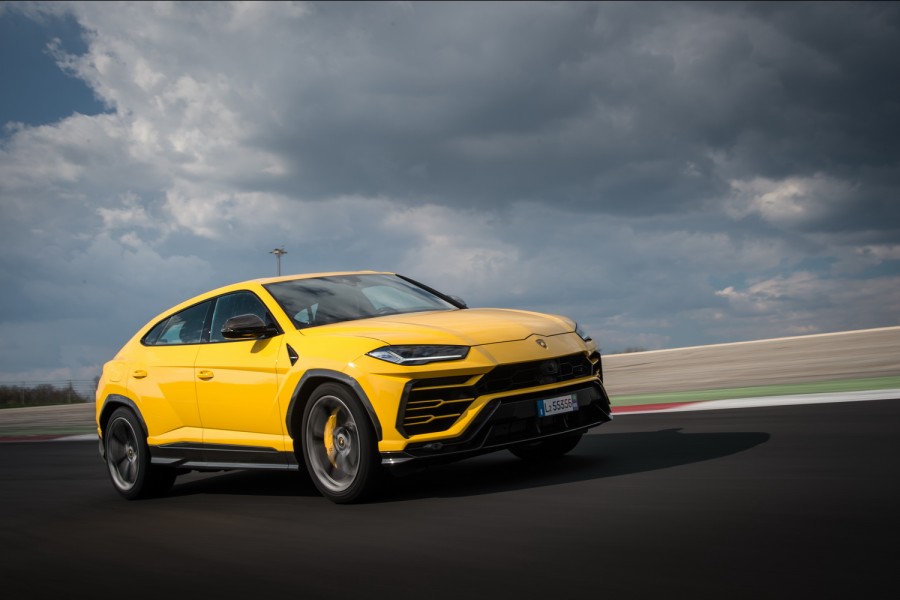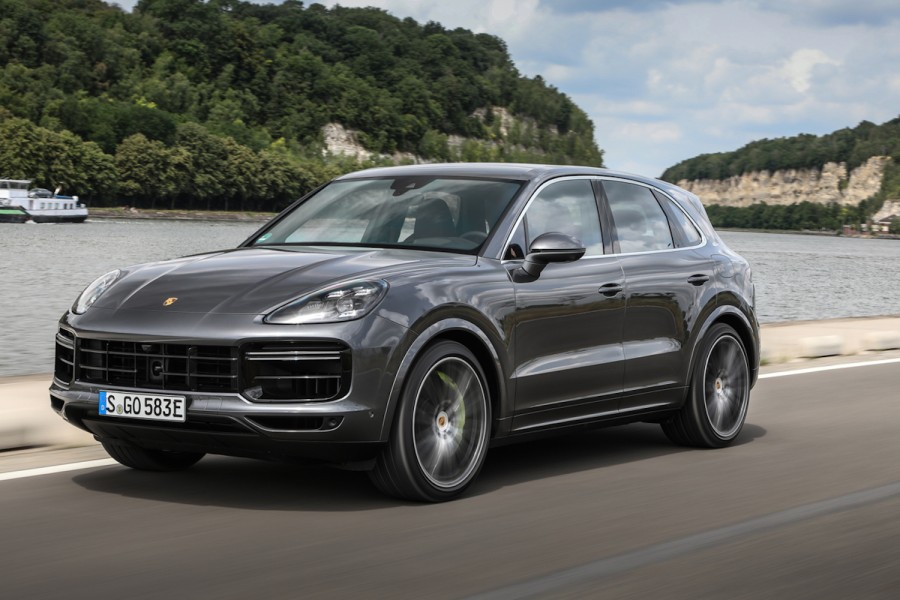Hidden under the camouflage wrap of our pre-production test vehicle is only the second ever bespoke road car developed by BMW's M division, the 2023 BMW XM. The first was the BMW M1 of the late seventies, launched just a few years after the motorsport branch of BMW was created. The concept for the XM couldn't be more different. It's a large SUV and the first ever plug-in hybrid M car.
In the metal
Pictures of the camouflaged prototype don't reveal very much about the showroom-bound BMW XM, so take a look at the Concept XM for a strong hint at what it will look like. We expect the finished product to be a little toned down, but not very much. A huge radiator grille with the characteristic double bars of current M vehicles is certain to feature, as is the new split-headlight arrangement, as recently shown on the facelifted BMW X7 and new BMW 7 Series.
There's a rear-sloping roofline to meet the dramatically rising waist and a minimum alloy wheel size of 22 inches - 23s are optional. The door mirrors of the production car look more or less identical to those of the current M cars, such as the X5 M, with a carbon fibre cap and extra aerodynamic detailing.
Look closer at the camouflaged shots and you'll spot that there are bulges covering most of the rear lights. This suggests that the extravagant style of the taillights on the concept will be carried through to production, as will the new stacked take on BMW M's usual quad-exhaust setup. We're also hoping that the BMW logo will be etched into the tailgate glass, in a nod to the BMW M1's use of two BMW badges at the back.
The cabin of the XM isn't quite as dramatic as that of the concept, but it does take its lead from it. Obviously, there will be a curved glass dashboard, as in all recently-launched new BMW models, but we're not yet sure what's happening with the steering wheel. The concept showed a slightly misshapen circle, which is a departure for BMW, and images of an M version of the new 7 Series reveal that it will come with a flat-bottomed steering wheel. It's logical to assume that wheel will be fitted to the XM, too. We expect the 'M1'/'M2' buttons to be retained, though possibly restyled.
In the test car, the drive selector on the centre console was the same item found in the latest automatic M cars, surrounded by shiny black buttons to access all the sub-systems.
The rear cabin of the XM is a bit of a surprise. While it's not as bling as the concept version's, it continues with the 'lounge'-like approach, where the seat back is integrated with the doors more than usual, giving it the feel of a comfortable sofa to a certain extent. There's loads of legroom and headroom, too, and the doors open wide. A Rolls-Royce-like headliner using LED lights to mimic a starlit night sky is expected to be an option.
Driving it
BMW M is adamant that air suspension is not suited to its needs, so it had to go about things in a unique way to ensure that the XM is more comfortable than its other X models without sacrificing too much in terms of the usual M sportiness. To that end, while the XM gets steel springs, it also features three-setting adaptive dampers, rear-wheel steering ('Integral Active Steer' in BMW-speak) and a 48-volt active roll stabilisation system.
Full details of the plug-in hybrid system have yet to be confirmed, but we do know that there's a new twin-turbocharged 4.4-litre V8 petrol engine under the bonnet and that, in conjunction with a 'powerful' electric motor, peak power is 650hp and torque maxes out at 800Nm. Drive is via an M variant of the usual eight-speed automatic gearbox to all four wheels, with a centre differential apportioning torque between the front and rear axles and an electronically controlled Active M differential divvying it up between the back wheels.
No performance or weight figures have been released and though the XM is likely to be heavy thanks to all that hardware, so it isn't expected to accelerate quicker than the X5 M. Expect a 0-100km/h time of a little over four seconds. It certainly feels that rapid, but it also feels like it has a very powerful engine rather than assistance from an electric motor.
More impressive than the standing-start acceleration is the way the XM effortlessly gathers speed when it is already travelling quickly. It pulls that trick off even if it's running in purely electric guise. There's a synthetic sound piped through the speakers in that situation, though otherwise the XM is serenely quiet when you're just ambling or cruising along - double-glazed side glass helps with that.
In the sportier driving settings, the V8 is fully audible, though its voice is enhanced a tad.
Depending on the driving situation, it's worth delving into the main setup menu, accessed by a single button on the centre console. There, as is the BMW M norm, you can alter various aspects of the car, such as the powertrain response, damping, differential settings and brake feel. The all-wheel-drive system is in '4WD' as standard, with more rear bias in the '4WD Sport' mode, while the XM gets a unique '4WD Sand' setting - alluding to its likely popularity in the Middle East, where they actually explore the sand dunes in high-performance SUVs.
Altering the damping also changes the characteristics of the active roll bars, which allows the XM a wide operating envelope. Our brief drive revealed that, while the XM does not have a magic carpet ride quality in any setting, it is certainly smoother and more comfortable than the likes of M versions of the X3/X4/X5/X6 by default. At the other end of the extreme, the suspension can be too firm and unyielding for any public road I've ever driven on, though the active roll stabilisation system works brilliantly to keep unwanted body movements in check throughout.
Through an interesting sequence of low-speed corners, meanwhile, the rear-wheel steer helps imbue the XM with more agility than you'd expect from looking at it. That helps make it an involving car, too, though you'll need a lot of space to enjoy driving it as it was designed.
What you get for your money
It's difficult to say where the XM will come in in terms of price. BMW Ireland has yet to make any announcement (we won't see the finished car until September this year and it doesn't go on sale until March 2023). The most expensive M SUV right now is the X6 M, at €219,795, while the most expensive M car is the M8 Convertible at €253,855. The XM is theoretically the range-topper, but as a plug-in hybrid its emissions rating is likely to be low, meaning a lower rate of VRT than its purely combustion-engined siblings.
Regardless, the XM won't be cheap to buy, that much is clear.
Summary
Diehard BMW M fans may not approve of the XM. And there's a lot in it to challenge their loyalty to the brand: the first M-only vehicle since the M1 is a big, heavy SUV; it features a plug-in hybrid powertrain; and its styling is divisive to say the least. Nonetheless, the XM was designed to further the reach of the brand and, thankfully, it doesn't come at the expense of the division's traditional sports cars. More importantly, our early drive suggests that it has a sprinkling of M magic in the chassis. Given the imminent arrival of the new BMW M4 CSL, M2 Coupe and M3 Touring, I think even the most ardent enthusiasts will forgive BMW for expanding the remit of its M branch. Those that it's targeted at are likely to adore it.

